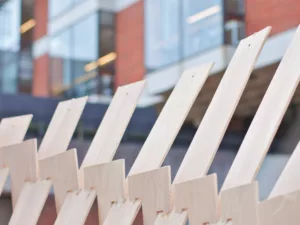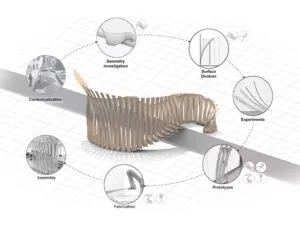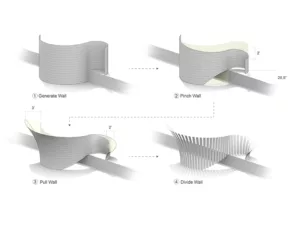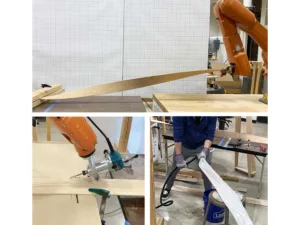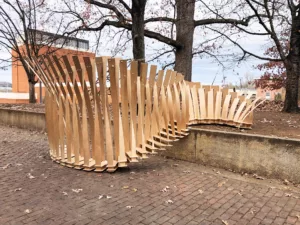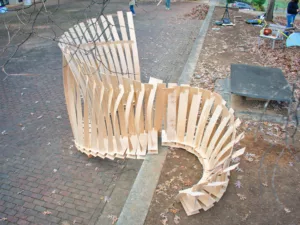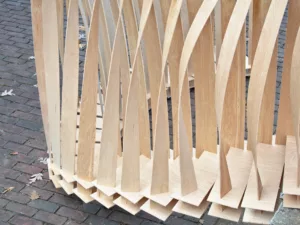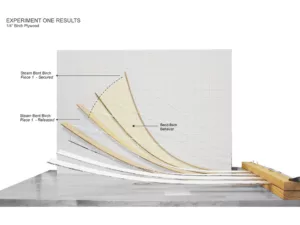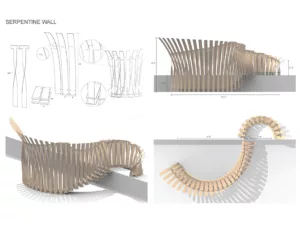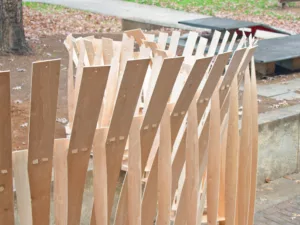Robotic Serpentine Wall
Description
The project “Robotic Serpentine Wall” investigates new, unexpected uses of wood to construct an inhabitable structure. It created a structure that 1) celebrates steam bending’s ability to radically change wood’s structural potential; 2) is inhabitable, improves the site on which it was built, and is connected with the history of its larger context; and 3) was data- and mathematically driven.
Program Development
This project responded to its site—the North Terrace of UVA’s School of Architecture—in two ways. First, it negotiated the step between the ground and the top of the planter box, a distance of 26 ½”, in a way that encourages small group interactions. Second, the form responds to the complex history of serpentine walls at UVA. This sinusoidal shape was manipulated to create a structure that produced a small gathering area on one side and a seat on the other. It was then reverse-engineered to minimize the number of unique components upon construction.
Several experiments were conducted to test the amount that pieces of birch plywood and oak plywood reverted to their original shape following steaming and either bending or twisting; birch plywood performed better in both. A third experiment determined plywood pieces needed to be a minimum length of 24” to prevent cracking as a result of twisting.
Prototyping the structure led to the discovery that the primary pieces work in tension, not compression. This in turn resulted in the inclusion of additional support pieces for greater structural stability.
The final design was constructed through a complex process of cutting, twisting and bending, and slotting the pieces together. Each piece was machine cut according to the specific measurements dictated by the digital design. They were then steamed before being twisted and bent into position, allowed to dry, and put together. The final assembly process revealed that the connections between wall sections were necessary for the structure to be free-standing.
This project was awarded the 2021 Bruce Abbey Technology Award. It was featured on the University of Virginia School of Architecture’s website.
Author and Image Credit
Leah Kirssin, Bay Penny, Trenton Rhodes.
Instructor
Ehsan Baharlou

